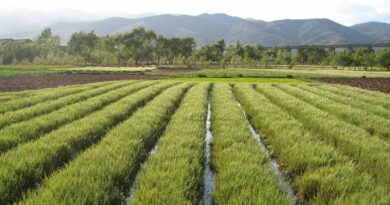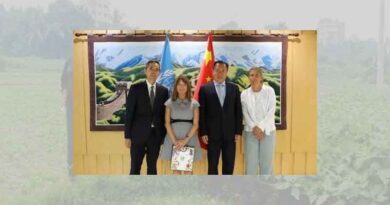Scottish field trials show cost of shift to sustainable farming
16 February 2023, UK: Farmers who want to adopt more sustainable and environmentally friendly farming methods could face lower short-term margins, but the long-term benefits could outweigh the pain, according to the results of an innovative crop trial in Scotland.
The trial, at The James Hutton Institute’s unique, long-term Centre for Sustainable Cropping (CSC) field platform on Scotland’s fertile northeast coast, is testing the impacts of moving towards more regenerative methods of farming – which farmers are increasingly taking an interest in.
A cost benefit analysis of its first six-year crop rotation (where six crops are rotated around six fields) found that moving from conventional commercial crop management to a more low-input, mixed or integrated cropping system could dent earnings by up to £500, or 25%, per hectare per year.
However, while inputs such as fertilisers were reduced, how much was grown, or yield, was maintained. It’s also expected that the margins would improve longer term, as initial costs, such as for compost, to help return to soil to health, are no longer needed – and in some cases farms could have their own supply, so avoid that cost altogether. In addition, farmers would be less susceptible to fertiliser price hikes, as soil health and wider biodiversity improve.
The studies were undertaken at the 42-hectare CSC site at Balruddery Farm, near Dundee, one of very few sites that look at long-term trends in the whole system across multiple fields and crops.
Cathy Hawes, a research scientist at The James Hutton Institute, says, “When you first move from a conventional intensive cropping system to a more sustainable, integrated system, there are potentially initial costs. You also disturb the system by changing management, for example, adding the compost and reducing tillage. But over time the system starts to stabilise and you get benefits to crop health and soil structure, as well as biodiversity.
“That means the system is more able to regulate itself, for example, in terms of pest and disease control, with fewer inputs, therefore less cost in the longer term. So we would hope to see more of these benefits when we get the results from the second rotation.”
“With lower inputs, farmers could also improve resilience to economic shocks, such as the fertilizer price spikes we’ve seen recently, because the system is more stable,” says Michaela Roberts, an economist at the institute, who performed the analysis for the study.
Roberts says the study also only looked at the on-farm costs and benefits, so there are other uncosted benefits, such as CO₂ sequestration in the soil, from taking up no-till methods, reducing soil runoff impacts and wider biodiversity.
Rotation crops used were potatoes, winter wheat, winter barley, winter oilseed rape, spring sown faba beans and spring barley.
“The only crop where yields were significantly lower on the low-input side was the winter wheat,” says Hawes. “While there were year on year variations in yield, across the whole rotation the other crops didn’t show a yield penalty. That’s because we were trying to integrate different management strategies into the system to compensate for reduced inputs and that seemed to work quite well.”
The CSC, which is unique in the UK as a long-term integrated cropping trial site, was set up in 2009 to study new cropping approaches in a real-world setting that farmers find too risky to incorporate into their commercial activities until properly tested.
After an initial two years’ baseline setting, the first six-year crop rotation started in 2011. The second crop rotation completed in Autumn 2022, and it’s hoped analysis of this second rotation could be completed by the end of 2023.
Despite skepticism about the trials back in 2009, there’s growing interest from the farming community, says Hawes.
“Early on, we had groups visit and they wondered what on earth we were doing it for, because more environmentally friendly management didn’t seem relevant to commercial situations,” she says. “But now we have people coming to us and asking how they can apply it themselves.
“In the last decade, there’s been a massive change in in attitude. Everyone is now more aware that that we need to be looking after the whole environment rather just producing food.”
While the crops used aren’t representative of a traditional farm rotation, Hawes says they do allow researchers to monitor a diverse range of crops and how each responds to a low-input system. All are also typical of the region.
The work, due to be published in the Journal of Environmental Management in April, was funded via the Scottish Government’s Rural and Environment Science and Analytical Services Division (RESAS).
The environmental benefits of the first rotation were covered in 2019 study of the CSC site, published in the journal Agronomy.
Also Read: Developing Agricultural Research Institutes
(For Latest Agriculture News & Updates, follow Krishak Jagat on Google News)















